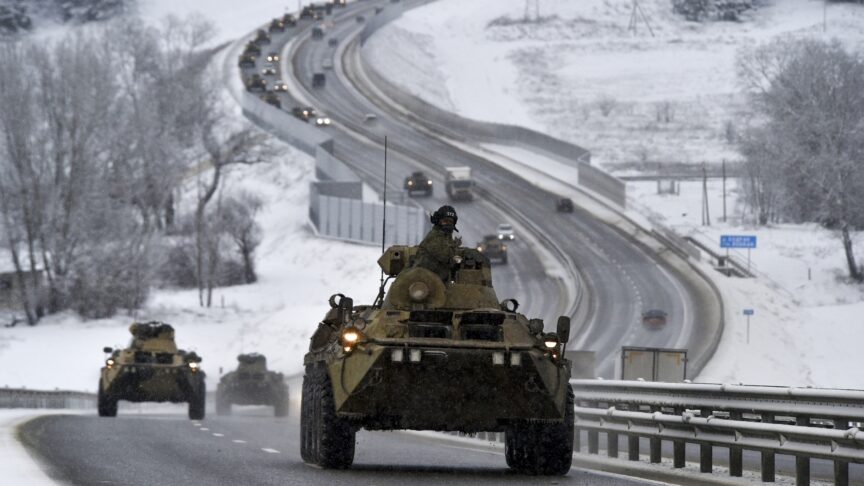Steps toward an EU-NATO link
The EU and NATO have a new opportunity to collaborate in ways that would help both organizations deal with fragile and failing states. But it will require practical steps to overcome ideological opposition to greater cooperation
Renewed interest in Europe’s defense capabilities on both sides of the English Channel, France’s much-heralded return to NATO’s military structures and the very real risk that the alliance will fail in its largest mission in Afghanistan may finally provide impetus for greater EU-NATO cooperation.
Today, NATO and the EU might as well reside on different continents, rather than on two sides of the same city. For after a period of strong cooperation between Lord Robertson at NATO and Javier Solana, the EU’s foreign policy czar, the two institutions have for the last four years drifted apart.
Joint meetings of their respective management boards — the North Atlantic Council and the EU’s Political Security Committee — are famously testy even though the two blocs have 21 members in common.
The reasons for the drift have been manifold. Turkey and Cyprus — and to a lesser extent Greece — have blocked greater cooperation between NATO and the EU for their own parochial reasons. Under Jacques Chirac, France was keen to promote Europe’s defense capabilities, nixing any division of labor that could be seen as denying the EU a future role independent of NATO.
The EU’s three-year period of introspection following the rejection of the Constitutional Treaty by the French and Dutch voters also made outward cooperation difficult.
Finally, in the early years of the Bush administration, Washington favored ad hoc “coalitions of the willing,” which downplayed NATO’s role.
On the ground, cooperation between EU and NATO was a little better. In permissive environments — like the Balkans — the two organizations have found a workable modus operandi based on the so-called Berlin Plus arrangements that designate NATO’s deputy supreme commander (always a Briton or a German) as the EU commander.
In Bosnia, NATO handed its SFOR mission over to the EU with no glitches. In a similar vein, preparations for the EU’s takeover of the U.N. mission in Kosovo — where NATO is responsible for security — have also run smoothly.
In more hostile terrains, however, cooperation has proven more difficult. Both organizations scrambled to assist the African Union in Darfur, stepping on each other’s toes as they did. Recriminations between them flew over the 2003 operation in the Democratic Republic of Congo, and in Afghanistan they seem only to have a cursory relationship.
Now, finally, circumstances are such in both the United States and Europe that an alignment between NATO and the EU may be possible. But how can we ensure an arrangement between the two organizations in ways that harness each one’s distinctive advantage?
Two areas for collaboration stand out. First, U.S. and European governments should establish a joint NATO/EU Center for Security and Justice Sector Reform to house their respective standing capabilities in this field.
Experiences in Iraq, the Balkans and Afghanistan have shown that the ability to build indigenous security capability — in the police, army and judiciary — is critical and lacking. Neither NATO nor the EU can tackle the gamut of challenges — from training police officers, ensuring timely salaries, organizing demobilization — by themselves.
Together, however, they can build the expertise to provide an end-to-end reform package. NATO can do the hard end, including military and intelligence reform based on its experiences in Eastern Europe, while the EU can supply police trainers, governance specialists and economists.
Second, they should set up a NATO/EU School for Conflict, Post-Conflict and Stabilization to provide training for civil servants, functionaries and consultants — a sort of Harvard for bureaucrats heading into war zones.
Addressing the needs of weak and failing states continues to be an international security challenge. The frequency of new U.N. peacekeeping missions is up to nearly one every six months. Yet training and pre-deployment preparation for civilians remains weak and lags far behind the military. A joined-up school could begin training staff more rigorously.
How to overcome the overtly political obstacles to practical EU-NATO cooperation? Like the European Aeronautic Defence and Space Co., the two organizations could have two heads — one from each grouping — or, like the European Central Bank, they could rotate the chief. Or, as with the World Bank and IMF, a board of “shareholders” could be nominated from the EU and NATO to safeguard their interests.
To undercut any dissent from Turkey and Cyprus, one institution could be located in Nicosia and the other in Ankara. If this proves too difficult, locating one of the institutions in the field, for example Kabul, might offer a workable compromise.
In the last 15 years the United States and Europe have spent more than five times as much on stability operations as on major combat. More significantly, several times as many servicemen have died in these types of operations. Events may for the first time in many years allow for better cooperation between NATO and the EU.
It is vital leaders seize the opportunity with a practical agenda aimed at dealing with fragile and failing states, one of the 21st century’s key national security challenges.
This piece was also published by United Press International.
The European Council on Foreign Relations does not take collective positions. ECFR publications only represent the views of their individual authors.


